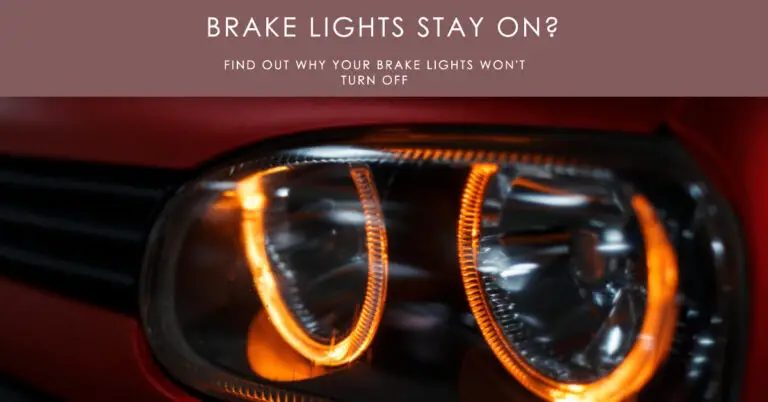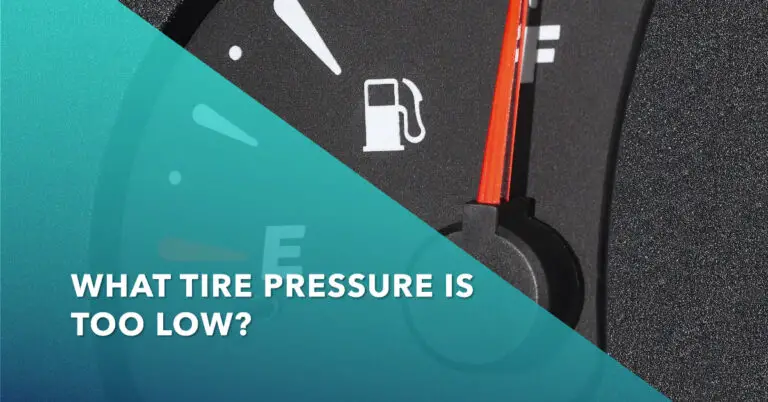What Is The VSA Light On A Honda? A Comprehensive Explanation

The VSA light on a Honda is a warning indicator that alerts the driver of a potential problem with the Vehicle Stability Assist (VSA) system. This system is designed to help the driver maintain control of the vehicle during sudden maneuvers or when driving on slippery roads. The VSA light is typically located on the dashboard and may appear in different colors depending on the make and model of the vehicle.
There are several reasons why the VSA light may turn on, including low tire pressure, a faulty ABS unit, or a damaged steering angle sensor. In some cases, the VSA light may simply be triggered by a temporary glitch in the system and can be reset by turning off the engine and restarting the vehicle. However, it is important to have the system checked by a qualified mechanic if the light remains on or if the vehicle experiences any unusual driving behavior. Understanding the VSA light and its potential causes can help drivers stay safe on the road and avoid costly repairs.
Table of Contents
What is the VSA Light?
Definition of VSA Light
The VSA light is a warning indicator on Honda vehicles that represents the Vehicle Stability Assist system. It is designed to help drivers maintain control of their car in difficult driving conditions, such as slippery roads or sudden turns. The VSA system works by automatically applying the brakes to individual wheels and reducing the engine power when a loss of traction is detected.
VSA Light Functions
The VSA light performs several functions. It monitors the VSA system and alerts the driver if there is a problem with the system. It also signals the driver when the system is engaged or disengaged. The VSA light can illuminate in different ways depending on the situation. For example, it may blink rapidly when the system is actively working to maintain control of the car or stay on continuously when there is a problem with the system.
VSA Light Indicators
There are several reasons why the VSA light may come on. Some of the most common reasons include low tire pressure, a malfunctioning ABS system, or a damaged steering angle sensor. If the VSA light comes on, it is important to have the system checked by a qualified mechanic as soon as possible. Ignoring the warning could result in a loss of control of the vehicle and potentially dangerous situations.
Causes of VSA Light
When the VSA light comes on in a Honda, it indicates that there is a problem with the Vehicle Stability Assist system. There are several causes of the VSA light, ranging from minor issues to serious problems.
Common Causes of VSA Light
One of the most common causes of the VSA light is a low tire pressure. When the tire pressure is low, it can cause the wheels to spin at different speeds, which can trigger the VSA system. Another common cause of the VSA light is a faulty ABS unit. If the ABS unit is not working properly, it can cause the VSA light to come on.
Another common reason for the VSA light is a damaged steering angle sensor. The sensor is responsible for measuring the angle of the steering wheel and transmitting the information to the VSA system. If the sensor is damaged, it can cause the VSA light to come on.
Serious Causes of VSA Light
While many causes of the VSA light are minor, some can be more serious. One serious cause of the VSA light is a malfunctioning VSA modulator control unit. If the control unit is not working properly, it can cause the VSA system to fail, which can be dangerous.
Another serious cause of the VSA light is a malfunctioning VSA sensor. The sensor is responsible for measuring the speed of each wheel and transmitting the information to the VSA system. If the sensor is not working properly, it can cause the VSA system to fail, which can be dangerous.
How to Fix VSA Light
DIY Fixes
If the VSA light comes on, there are a few things that you can do to try and fix it yourself. Here are some DIY fixes to consider:
- Activate the VSA button: Look for the VSA button in your car and try to activate it. In many cars, it is located on the console. If you can’t find it, check the owner’s manual for its location.
- Inflate and inspect tires: Make sure that all the tires in your car are inflated to the correct tire pressure.
- Check the brake fluid: Low brake fluid levels can cause the VSA light to come on. Check the brake fluid level and add more if necessary.
- Check the ABS sensors: The ABS sensors can sometimes become dirty or damaged, which can cause the VSA light to come on. Check the sensors and clean or replace them if necessary.
Professional Fixes
If the DIY fixes don’t work, it’s time to take your car to a professional mechanic. Here are some fixes that a mechanic might recommend:
- Replace the ABS sensor: If the ABS sensor is damaged, a mechanic may recommend replacing it.
- Replace the brake fluid: If the brake fluid is low or contaminated, a mechanic may recommend replacing it.
- Replace the VSA module: If all else fails, a mechanic may recommend replacing the VSA module.
Costs of Fixing VSA Light
The cost of fixing the VSA light will depend on the specific issue causing it. DIY fixes may not cost anything at all, while professional fixes can range from a few hundred to a few thousand dollars. Here are some estimated costs:
- ABS sensor replacement: $100-$300
- Brake fluid replacement: $50-$150
- VSA module replacement: $500-$2000
It’s important to keep in mind that these are just estimates and that the actual cost may vary depending on your location and the type of car you have.
Preventive Measures
Maintenance Tips
To prevent the VSA light from turning on, it’s important to keep up with regular maintenance. This includes checking and maintaining proper tire pressure, as low tire pressure can cause the VSA system to malfunction. Additionally, regularly inspecting and replacing brake pads and rotors can help prevent issues with the VSA system.
Another important maintenance tip is to keep the VSA system clean. Dirt and debris can accumulate on the sensors and cause the system to malfunction. Regularly cleaning the sensors and other components of the VSA system can help prevent this issue.
Driving Tips
Proper driving techniques can also help prevent the VSA light from turning on. It’s important to avoid sudden and aggressive maneuvers while driving, as this can cause the VSA system to activate. Additionally, drivers should be mindful of road conditions and adjust their driving accordingly.
When driving in slippery or wet conditions, it’s important to reduce speed and avoid sudden movements. This can help prevent the VSA system from activating and keep the vehicle stable on the road.
When to Seek Professional Help
If the VSA light does turn on, it’s important to seek professional help. Continuing to drive with the VSA light on can be dangerous and can cause further damage to the vehicle.
A qualified mechanic can diagnose and repair any issues with the VSA system. This may include replacing sensors, repairing damaged components, or updating software. It’s important to address any issues with the VSA system promptly to ensure the safety and reliability of the vehicle.
Conclusion
In conclusion, the VSA light on a Honda is an important indicator that should not be ignored. It is an indication that there is a problem with the Vehicle Stability Assist system, which is responsible for ensuring the safety and stability of the vehicle.
If the VSA light comes on while driving, it is important to take immediate action to address the issue. This can be done by checking the tire pressure and inflating them to the correct level, as well as ensuring that the VSA system is turned on.
If the VSA light remains on, it may be necessary to take the vehicle to a qualified mechanic for further diagnosis and repair. It is important to note that turning off the VSA system should only be done in emergency situations and not as a permanent solution to the problem.
By following the recommended steps outlined in this article and seeking professional help when necessary, Honda owners can ensure that their vehicles remain safe and reliable on the road.
FAQs
Can I still drive my car with the VSA light on?
Yes, you can still drive your car with the VSA light on, but it is not recommended. The VSA system is designed to help you maintain control of your vehicle during sudden maneuvers or in slippery conditions. If the VSA light is on, it means that the system is not functioning properly, and you may not have the same level of control over your vehicle as you would normally.
How do I turn off the VSA light on my Honda?
To turn off the VSA light on your Honda, you need to fix the underlying issue that is causing the light to come on in the first place. This could be anything from low tire pressure to a faulty ABS unit. Once the issue is resolved, the VSA light should turn off on its own. If it doesn’t, you may need to take your car to a mechanic to have it diagnosed.
What should I do if the VSA light comes on while I’m driving?
If the VSA light comes on while you’re driving, it means that the system has detected a problem and has turned off. You should pull over to a safe location as soon as possible and check your owner’s manual to see what the problem could be. It could be something as simple as low tire pressure, or it could be something more serious. If you’re not sure what to do, it’s best to take your car to a mechanic to have it checked out.
Can I still drive my car if the VSA system is off?
Yes, you can still drive your car if the VSA system is off, but you should be aware that you may not have the same level of control over your vehicle as you would normally. The VSA system is designed to help you maintain control of your vehicle during sudden maneuvers or in slippery conditions. If the system is off, you may need to adjust your driving style to compensate for the lack of assistance.
What should I do if the VSA light comes on after I’ve had work done on my car?
If the VSA light comes on after you’ve had work done on your car, it’s possible that something was not reconnected or reassembled correctly. You should take your car back to the mechanic who did the work and have them check to see if everything was done correctly. If it turns out that the mechanic made a mistake, they should fix it for you free of charge.







